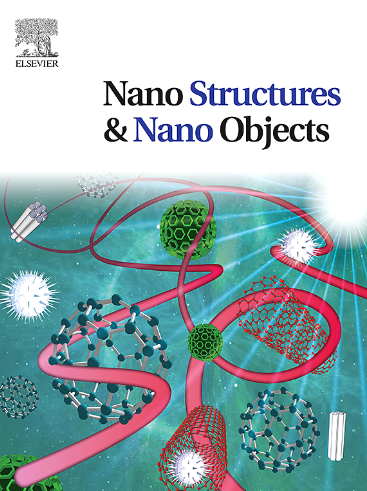Ternary hybrid nanofluid flow and heat transfer characteristics in a permeable cylinder with viscous dissipation effect
IF 5.45
Q1 Physics and Astronomy
引用次数: 0
Abstract
Heat transfer can be enhanced by using ternary hybrid nanofluid (THNF), a novel class of nanofluid. The current study examines nonlinear heat radiation through THNF and hybrid nanofluid (HNF) flow through the permeable cylinder with viscous dissipation. Due to its numerous uses, the study of manganese Aluminium oxide, Copper and Titanium dioxide nanocomposite base HNF is becoming more popular in invention and research. The partial differential equations are converted into ordinary differential equations and solved mathematically by using the BVP4C method in MATLAB coding. Moreover, a TNF combination nanofluids exhibits a higher heat transfer rate compared to both hybrid and base nanofluids. By creating systems with ideal flow and investigating how viscous dissipation impact the flow, scientists and engineers can improve the efficiency of heat transmission. Key parameters such as temperature, velocity, skin friction, and heat transfer rates are examined and visually represented. Findings can be applied to the design of industrial devices. Additionally, the analysis reveals several solutions (first and second solutions) for the similarity equations. Stability assessment shows that 1st solutions are steady and practically viable, while 2nd solutions are unsteady. Furthermore, a 0.1 % rises in the overall nanoparticle volume fraction results in a significant rise in the SFC and in the Nusselt number against suction parameter in the stable solution. Increasing causes decrease the variation in for both first and second values. The obtained critical values are , corresponding to . The study also highlights improvements in heat transfer rates driven by volume fraction, suction, and Eckert number effects.
具有粘性耗散效应的可渗透圆柱体中三元杂化纳米流体的流动和传热特性
三元混合纳米流体(THNF)是一种新型的纳米流体,可以增强传热性能。本研究研究了THNF和混合纳米流体(HNF)在具有粘性耗散的可渗透圆柱体中的非线性热辐射。由于其广泛的用途,锰铝氧化物、铜和二氧化钛纳米复合材料的研究在发明和研究中越来越受欢迎。将偏微分方程转化为常微分方程,利用MATLAB编码中的BVP4C方法进行数学求解。此外,与混合纳米流体和基础纳米流体相比,TNF组合纳米流体表现出更高的传热率。通过创建具有理想流动的系统并研究粘性耗散如何影响流动,科学家和工程师可以提高传热效率。关键参数,如温度,速度,皮肤摩擦和传热率进行检查和可视化表示。研究结果可应用于工业设备的设计。此外,分析还揭示了相似方程的几个解(第一解和第二解)。稳定性评价表明,第一解是稳定可行的,而第二解是不稳定的。此外,在稳定溶液中,整体纳米颗粒体积分数每增加0.1 %,SFC和努塞尔数对吸力参数就会显著增加。增大ϕ3=0、0.04和0.1会导致Rex - 1/2Nux的第一个值和第二个值的变化减小。得到的临界值分别为Sc1=2.3794,Sc2=2.3272和sc3 =2.2547,分别对应于ϕ3=0,0.04和0.1。该研究还强调了由体积分数、吸力和埃克特数效应驱动的传热率的改进。
本文章由计算机程序翻译,如有差异,请以英文原文为准。
求助全文
约1分钟内获得全文
求助全文
来源期刊

Nano-Structures & Nano-Objects
Physics and Astronomy-Condensed Matter Physics
CiteScore
9.20
自引率
0.00%
发文量
60
审稿时长
22 days
期刊介绍:
Nano-Structures & Nano-Objects is a new journal devoted to all aspects of the synthesis and the properties of this new flourishing domain. The journal is devoted to novel architectures at the nano-level with an emphasis on new synthesis and characterization methods. The journal is focused on the objects rather than on their applications. However, the research for new applications of original nano-structures & nano-objects in various fields such as nano-electronics, energy conversion, catalysis, drug delivery and nano-medicine is also welcome. The scope of Nano-Structures & Nano-Objects involves: -Metal and alloy nanoparticles with complex nanostructures such as shape control, core-shell and dumbells -Oxide nanoparticles and nanostructures, with complex oxide/metal, oxide/surface and oxide /organic interfaces -Inorganic semi-conducting nanoparticles (quantum dots) with an emphasis on new phases, structures, shapes and complexity -Nanostructures involving molecular inorganic species such as nanoparticles of coordination compounds, molecular magnets, spin transition nanoparticles etc. or organic nano-objects, in particular for molecular electronics -Nanostructured materials such as nano-MOFs and nano-zeolites -Hetero-junctions between molecules and nano-objects, between different nano-objects & nanostructures or between nano-objects & nanostructures and surfaces -Methods of characterization specific of the nano size or adapted for the nano size such as X-ray and neutron scattering, light scattering, NMR, Raman, Plasmonics, near field microscopies, various TEM and SEM techniques, magnetic studies, etc .
 求助内容:
求助内容: 应助结果提醒方式:
应助结果提醒方式:


